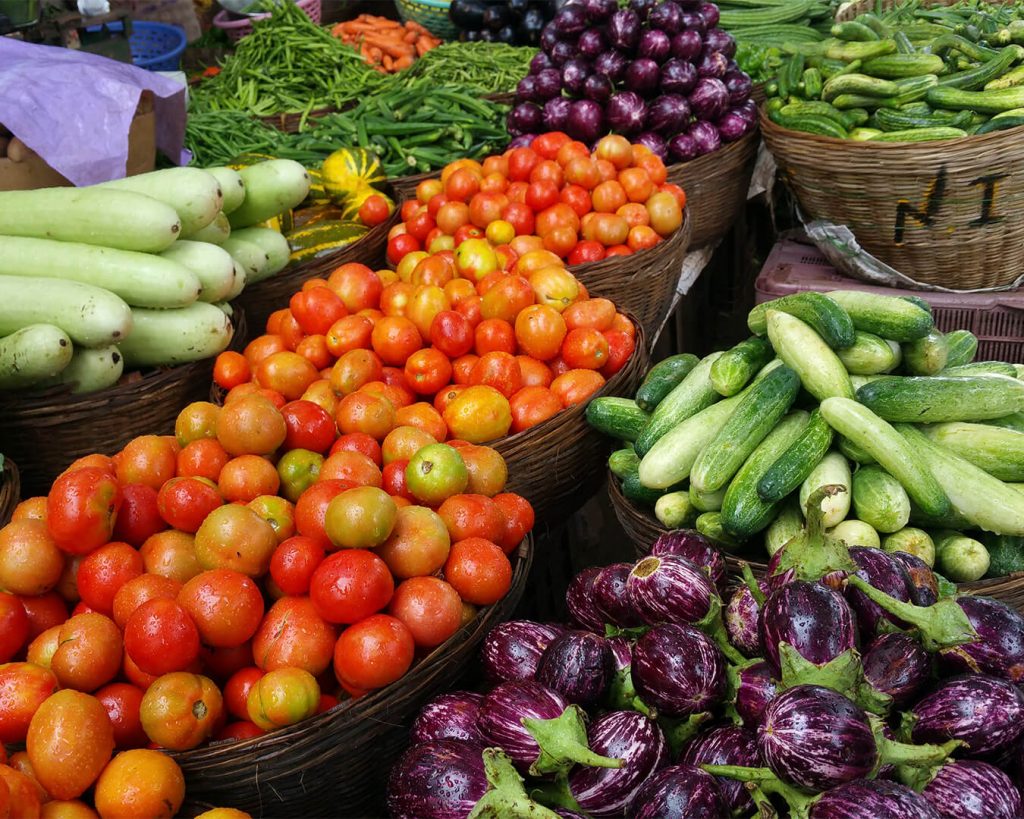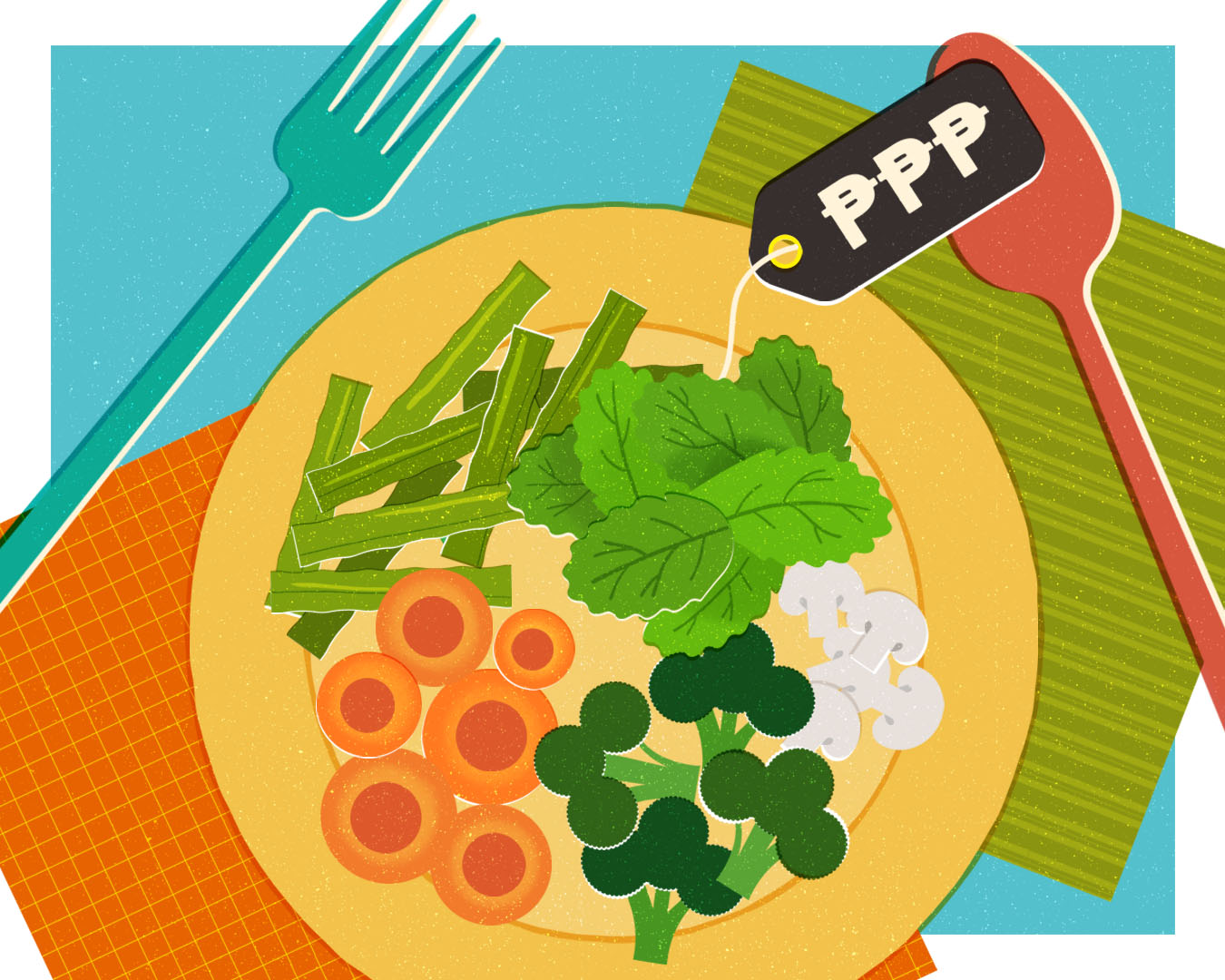Filipinos aren’t fond of vegetables, but Cebuanos take their love-hate relationship with plant-based food to another dimension.
If you think “onion-skinned” sounds mean, you haven’t dug enough in our own backyard. Because when it comes to coining pejorative terms out of greens, fruits and root crops, or maybe just about anything else, the Cebuano is tops.
A Vocabulary Lesson
Serve him a leafy salad, and he’ll say thank you for feeding him sagbot. That means weed in the vernacular, the kind that ruminants feast on, not that rolled stick of pure joy you first had a puff of in high school.
Speaking of school, if your grades consistently gave your parents a minor heart attack, then you perfectly fit the bill of the estudyante nga namayabas—a student who cannot resist picking fiber-rich guava fruits from the bayabas trees on his way to campus and so ends up cutting classes all the time.
And when the estudyanteng namayabas finally grows up but finds out that he sucks at adulting, then he becomes someone who’s nangamote. The root word, of course, is kamote, a root crop that older generations of Cebuanos associate with hardship and flatulence.
Naturally, it wasn’t hard for contemporary Cebuanos to embrace the term kamote driver—which probably originated from the capital—as part of their everyday lexicon of plant-based insults. Now I’m not sure about how the term came to be, but it probably has to do with all that gas and what it does to the driver’s bowels that makes one twist the throttle like mad, supposedly the consequence of eating too much of the root crop.
Interestingly during this pandemic, work from home set ups essentially have turned the home into the workplace. But does that mean that the house ref offers access to healthier food? Probably yes, if our collective attitudes toward the soil’s harvest—greens, fruits and root crops—change as well.
Now treating healthy food this way isn’t fair, but if you’re too sensitive (onion-skinned) and all this negativity is making you tear up, you better stop reading because our snarky word wizards of old have an adjective for woke folks like you: kapayason. That’s because when you pick a fruit or snap a branch of the kapayas or papaya, the broken ends “weep” copious tears of white sap.
As if that’s not painful enough, a below-the-belt tag has stuck with the kamatis, or tomato, for the longest time. You probably won’t hear this often nowadays, but if someone is gikamatis, then that someone just went through a rite of passage down there but the healing process hasn’t gone too well. I will leave it to your inflamed imagination to figure out what a juicy, plump tomato has to do with all this suffering. (Hint: this applies only to boys.)
I wouldn’t blame if you’ve lost your appetite by now. So imagine the collective dislike towards vegetables, fruits and root crops of a people who grew up hearing about sagbot, the namayabas, the nangamote, the kapayason, and the gikamatis. Who can blame them when such nomenclature that’s as colorful as it is unpalatable has festered like mold for generations?
From the Book of Genesis
Then again, this collective dislike goes back a long, long way. And at the risk of being poisoned by a zealot, I would say its roots are partly biblical in nature. So let’s go back to the time of Cain and Abel, shall we?
In the story, the two brothers made an “offering to the Lord”: Cain, who tilled the land, “brought some of the fruits of the soil,” while Abel, who tended animals, brought “fat portions from some of the firstborn of his flock.” The Lord gave Abel’s offering a thumbs up, but “did not look with favor” on Cain’s. Cain, who was probably vegetarian, got upset and killed Abel.
So what’s the underlying message here? Meat is better than the fruits of the soil. So over the centuries in the Christian world, the idea permeated the subconscious mind of the flock, and fast forward to a colonized Philippines and its population of religious converts—the message, though misguided, remains to this day. Always, the centerpiece in every celebration—whether it’s fiestas, birthdays, weddings, baptisms, or other forms of offering—is lechon. Even the side dishes consist mostly of meat and offal, and it would be close to a miracle to find an entirely vegetable dish on the buffet table.
To be fair to the faith, I would also wish to point out that during Magellan’s expedition through the islands, the scribe Pigafetta noted that the locals from one community to another would welcome Magellan’s crew with a feast or gifts of pork and poultry. That means that long before the European explorers came, the inhabitants of our fertile lands were already obsessed with meat. The biblical passage from the Book of Genesis further bolstered this obsession. Can we blame our ancestors then if, like the Lord, they loved meat above all things edible?

Time to Face Facts
Being a meat lover myself, I have nothing against the consumption of pork, beef, goat, chicken and fish. But as I have grown older, I’ve also found that moderation is key, but with a substantial increase of greens in the family diet. And as any nutritionist worth his salt would push for, the nationwide campaign to improve the Filipino diet gets my support. Why? Because the facts demand so.
A study published in the National Center for Biotechnology Information journal in 2020 pointed out a decline in fruit and vegetable consumption among Filipino working adults. In contrast, there’s a “dietary shift towards refined sugars, fats and oils, and processed meats.” As a result, the study highlighted, “Filipino workers are vulnerable to disproportional macronutrient and micronutrient intake.” And along with the “sedentary nature of their jobs,” Filipino workers are predisposed to life-threatening diseases.
While the aforementioned facts will probably make you crave for a bowl of salad, many Filipinos will merely shift to full fatalist mode and grab the first thing they get their hands on. And, as the study says, this is a problem: “lack of access to healthy foods is cited as one of the main barriers to a healthy diet in the workplace.”
Interestingly during this pandemic, work from home set ups essentially have turned the home into the workplace. But does that mean that the house ref offers access to healthier food? Probably yes, if our collective attitudes toward the soil’s harvest—greens, fruits and root crops—change as well.
Eating the Supersagbot
Beyond the obligatory Filipino fresh lumpia and chopseuy served during celebrations, the Cebuano kitchen has quite a substantial list of plant-based food on offer. There’s adobong tangkong, utan bisaya, monggos, lumpia taugi, initlogang ampalaya, dinuldog, ginisang batong, ginataang nangka, utan sari-sari, nilaw-oy, tortang talong, talbos salad, kamoteng kahoy, boiled sweet potatoes, and many more.
Now ask yourself: which among these dishes have found their way to your table over the last few weeks? Unless you only partake in overpriced health food like kale and quinoa, because you’re so rich like that, you have no excuse because every single dish in the list uses affordable locally produced, easily accessible, nutrient-rich vegetables such as repolyo, petchay, kalabasa, kamunggay, okra, kamatis and that down-to-earth superfood called kamote.
So go forth and eat your locally produced supersagbot.



2 thoughts on “Why Cebuanos Don’t Eat Their Greens”